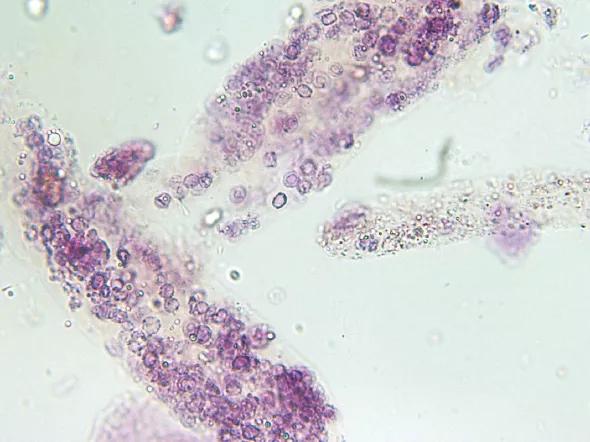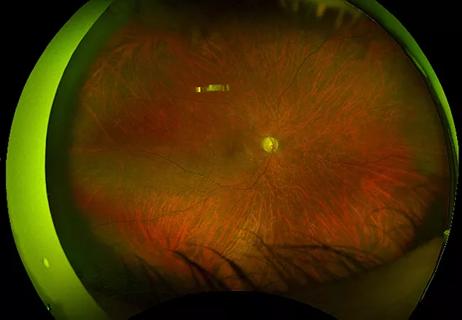It has immense value in small vessel vasculitis

Cleveland Clinic is a non-profit academic medical center. Advertising on our site helps support our mission. We do not endorse non-Cleveland Clinic products or services. Policy
On hospital rounds, I was recently asked, “If you could have only one test in a patient with small vessel vasculitis, what would it be?” Some were surprised by my answer: a urinalysis.
To my mind, few tests have the ability to provide information that can detect and potentially prevent the presence of organ and life-threatening disease the way a urinalysis can. Moreover, the urinalysis is a test that has meaning not only at diagnosis but throughout the patient’s course.
Glomerulonephritis is an important vasculitic manifestation that is typically asymptomatic. In granulomatosis with polyangiitis (Wegener’s) (GPA) and microscopic polyangiitis (MPA), glomerulonephritis can be rapid and severe, requiring dialysis, which has a profound effect on patient quality of life and outcome. Glomerulonephritis can also occur in other forms of vasculitis, including eosinophilic granulomatosis with polyangiitis (Churg-Strauss), IgA vasculitis (Henoch-Schönlein) and cryoglobulinemic vasculitis.
One may ask, if the concern is the kidneys, why wouldn’t my one test be a serum creatinine? There is no question that serum creatinine is important, as it provides a measure of renal function. However, since an elevated creatinine means that more than 50 percent of renal function has potentially been lost, the goal is to detect glomerulonephritis before a creatinine rise occurs, which the urinalysis is able to do. In glomerulonephritis, the earliest finding is microscopic hematuria with dysmorphic red blood cells, followed and/or accompanied by red blood cell casts (Figure 1). Abnormal urinalysis findings, when followed by prompt evaluation and intervention, provide an opportunity to minimize renal injury and damage that can lead to permanent loss of kidney function.

Figure 1. Urine microscopy showing red blood cell casts in a patient with active glomerulonephritis due to granulomatosis with polyangiitis (Wegener’s).
The urinalysis remains important even after a diagnosis of GPA or MPA has been made. Studies have shown that although glomerulonephritis is present in 20 percent of patients at diagnosis, 80 percent will go on to have renal disease at some point during their disease course (Hoffman GS, et al. Ann Intern Med. 1992;116(6):488-498). This means that ongoing vigilance for emerging glomerulonephritis is critical. Such vigilance can be ensured by including a urinalysis in the routine monitoring lab tests for patients with vasculitic diseases in which glomerulonephritis can occur. Another strategy we have used is to teach patients to perform urine dipstick self-testing between their routine monitoring labs.
One confounding issue is that after a patient has had glomerulonephritis, the urine will not always clear completely. It is not uncommon for proteinuria to persist as a result of damage that is not reflective of active disease. Hematuria and even red blood cell casts have also been found to persist in selected patients (Magrey MN, et al. Medicine. 2009;88(6):315-321). The interpretation of such findings must factor in the creatinine measurement, the presence of other disease features and whether there has been a change from previous observations. If it remains unclear whether the findings are indicative of active glomerulonephritis, a renal biopsy may be required.
Urinalysis also plays a valuable role in monitoring for urothelial toxicity in cyclophosphamide-treated patients. During treatment, cyclophosphamide can cause bladder injury as a result of urothelial toxicity from the metabolite acrolein. Patients receiving daily cyclophosphamide should take it all at once in the morning and then drink a large amount of fluid throughout the day to minimize urothelial exposure to toxic metabolites, and intermittent cyclophosphamide should be given with hydration and consideration for 2-mercaptoethane sulfonate sodium (MESNA). New microscopic hematuria in a patient receiving cyclophosphamide should raise suspicion for urothelial toxicity. Bladder injury can manifest severely as hemorrhagic cystitis and also represents a risk factor for later development of transitional cell carcinoma. While limiting cyclophosphamide exposure to three to six months through use of staged regimens appears to have reduced the risk of bladder cancer, the agent still poses potential toxicities.
Urinalysis can detect those cyclophosphamide-treated patients who are at risk of bladder cancer, and the presence of nonglomerular hematuria on urinalysis should prompt urological evaluation including cystoscopy (Talar-Williams C, et al. Ann Intern Med. 1996;124(5):477-484).
In rheumatology, biomarker discovery is an important avenue of investigation, and our Center for Vasculitis Care and Research is actively engaged in biomarker research here and through the Vasculitis Clinical Research Consortium. Although not new or fancy, the urinalysis exemplifies the impact a single biomarker can have in medicine. As we appropriately expand our range of biomarkers, we must remember the important role that the humble yet powerful urinalysis has in the care of our patients.
Dr. Langford is Director of the Center for Vasculitis Care and Research as well as Vice Chair for Research, Department of Rheumatic and Immunologic Diseases

Evidence-based therapies, monitoring, prevention and more

Holistic approach is necessary to ensure a correct diagnosis

Knowing the affected organs and vessels can help in identifying cause

When to consider the possibility of pulmonary artery involvement

When GCA initially presents without cranial symptoms

Relapses are frequent even with long periods of remission

Multidisciplinary management resolves complex case

Raising awareness of a common manifestation